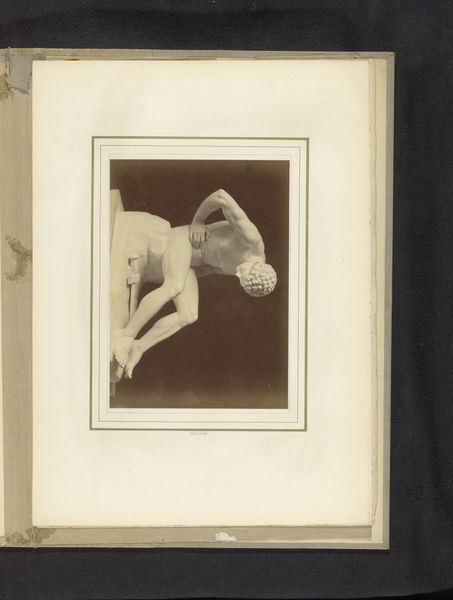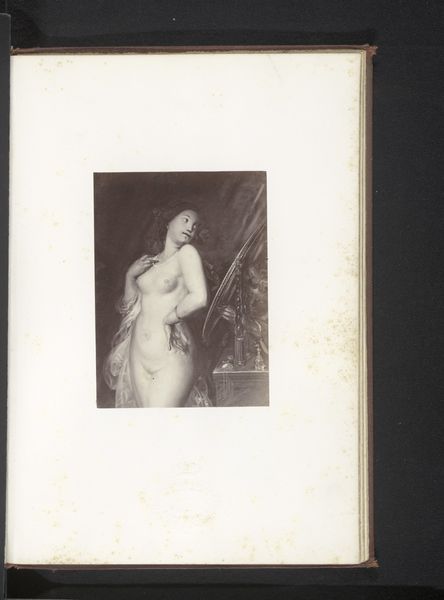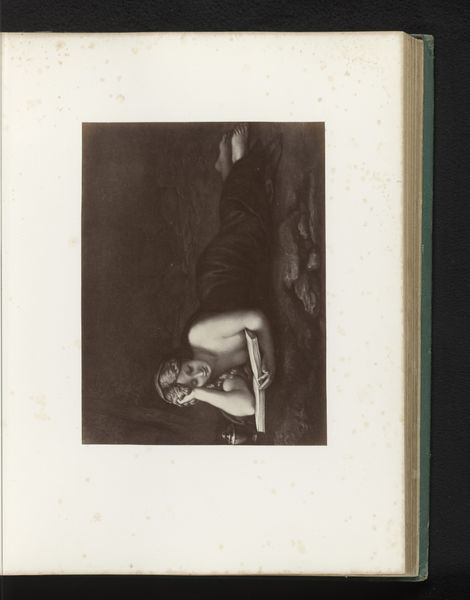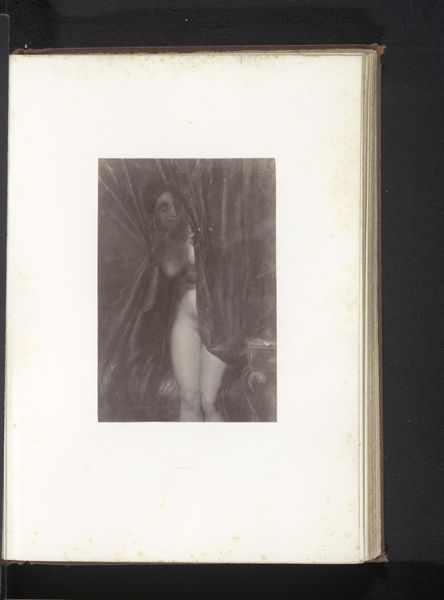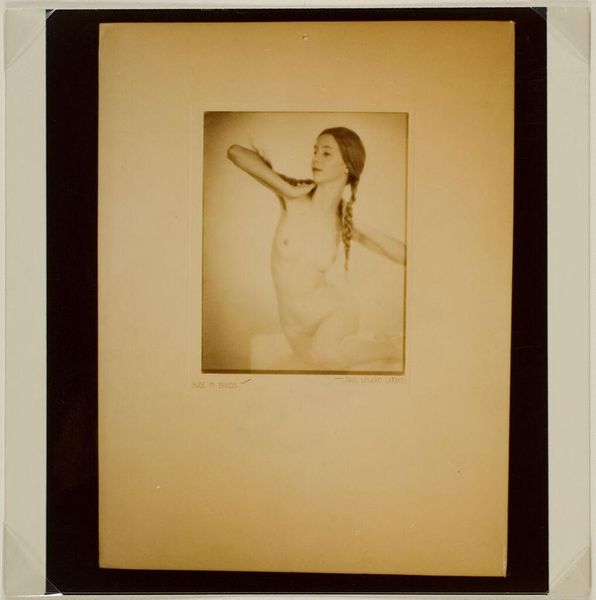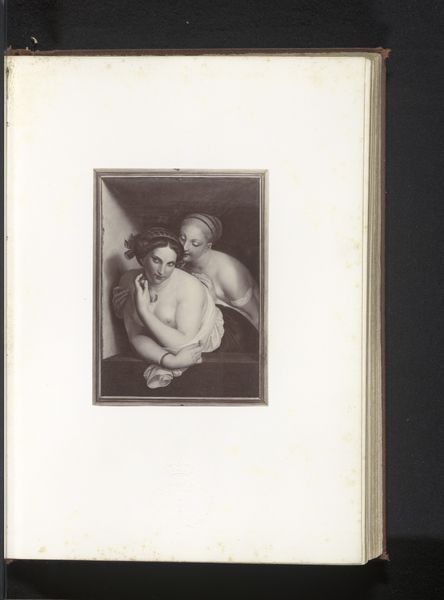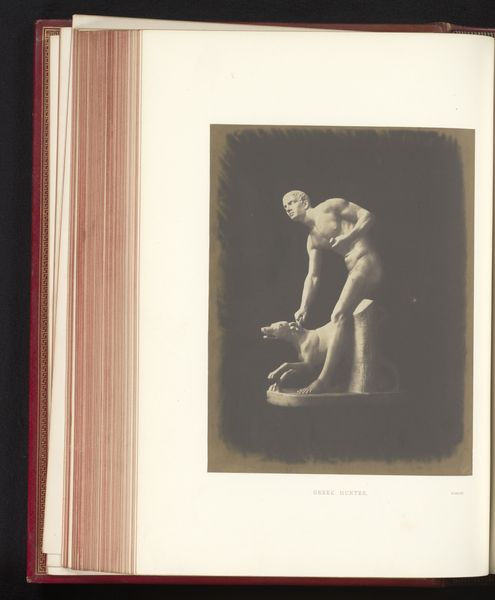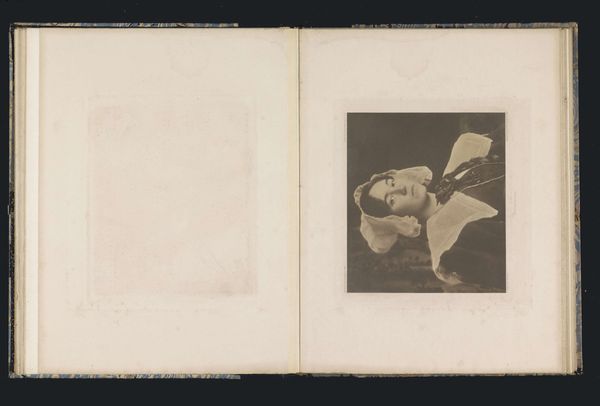
Dimensions: height 164 mm, width 97 mm
Copyright: Rijks Museum: Open Domain
Curator: What a find. We're looking at a photograph of Antoine Wiertz's painting, "The Rosebud", reproduced sometime before 1868, as photographed by Edmond Fierlants. Editor: The rose in her hand, though small, immediately catches my attention. Its delicate nature and simple form really cut through the drama around her. What do you think? Curator: I think you've touched on something crucial. This image presents a curious dynamic—Wiertz, deeply engaged with Romanticism, pushing for history painting, rendered here through the relatively new technology of photography. This inherently changes its reception. Editor: Yes, precisely! Thinking about photography’s unique reproduction capabilities during the mid-19th century, especially compared to painting’s unique physical process, is very revealing here. How do you think photographic materials interact with this sort of genre painting? Curator: Well, on one hand, photography democratizes access, extending the reach of art beyond the salon walls. But on the other, it flattens the image. The textures, the brushstrokes, all those tactile elements so vital to painting get translated. And who exactly was consuming this photographic reproduction, and under what circumstances? That’s something I’m curious about. Editor: Exactly, which gets at the question of consumption! This photograph makes a rather idealized image widely available for a specific type of consumption; one rooted in industrial advances, expanding availability, and capital gain. We see a beautiful painting by Wiertz—or a visual fragment of it—stripped down to its reproductive core via photography. Curator: Thinking about it that way also casts new light on the figure herself. In the original painting, Wiertz's model is clearly a constructed image intended for the male gaze, a commodity on display within a specific social structure. Here, that gaze is multiplied. Editor: Right, and thinking about the way Fierlants engages in photography, there's an artistic labour performed here too, one which is frequently overlooked when discussing traditional art objects. Thanks to the interplay of photography reproducing the female body within paintings, we have to reflect on that cycle today. Curator: Food for thought, certainly. It’s fascinating to see how art can speak across time and mediums, inviting continuous critical engagement. Editor: Absolutely. It prompts us to look more deeply at both the hand that creates, and the tools employed.
Comments
No comments
Be the first to comment and join the conversation on the ultimate creative platform.

